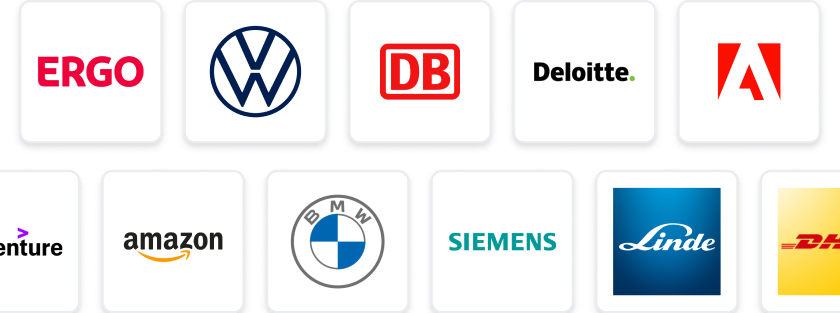At a Glance
- Tasks: Develop and verify digital designs for high-performance semiconductor solutions.
- Company: Join a leading company in Cambridge, driving innovation in semiconductor technology.
- Benefits: Enjoy a dynamic work environment with opportunities for growth and collaboration.
- Why this job: Be at the forefront of chip development and contribute to cutting-edge applications.
- Qualifications: Strong skills in VHDL/Verilog/SystemVerilog and experience with EDA tools required.
- Other info: Ideal for tech enthusiasts eager to shape the future of technology.
The predicted salary is between 36000 - 60000 £ per year.
Are you passionate about semiconductor design and verification? Do you want to work at the forefront of chip development for cutting-edge applications? Join our client's team in Cambridge, United Kingdom, a global hub for semiconductor and embedded systems innovation, and be part of an industry-leading company driving the future of technology.
About the Role
As a Design and Verification Engineer, you will be responsible for developing, verifying, and optimizing digital designs for high-performance semiconductor solutions. You will work closely with cross-functional teams, contributing to all phases of the ASIC/FPGA design flow, from architecture definition to final verification.
Required Qualifications
- Strong proficiency in VHDL/Verilog/SystemVerilog for RTL development.
- Hands-on experience with UVM-based verification methodologies.
- Knowledge of FPGA/ASIC design flow, synthesis, and timing closure.
- Experience with industry-standard EDA tools (e.g., Synopsys, Cadence, Mentor Graphics).
- Strong debugging skills and familiarity with waveform analysis tools.
Preferred Qualifications
- Experience with formal verification techniques and scripting (Python, Perl, or TCL).
- Knowledge of low-power design techniques and hardware security principles.
- Familiarity with RISC-V or ARM-based architectures.
- Background in machine learning accelerators or high-speed communication protocols (e.g., PCIe, Ethernet, DDR, USB).
Design Verification Engineer employer: XpertDirect
Contact Detail:
XpertDirect Recruiting Team
StudySmarter Expert Advice 🤫
We think this is how you could land Design Verification Engineer
✨Tip Number 1
Network with professionals in the semiconductor industry, especially those who work in design verification. Attend local meetups or online webinars to connect with potential colleagues and learn about their experiences. This can give you insights into the company culture and the specific skills they value.
✨Tip Number 2
Familiarise yourself with the latest trends and technologies in semiconductor design and verification. Follow relevant blogs, podcasts, and forums to stay updated. This knowledge can help you engage in meaningful conversations during interviews and demonstrate your passion for the field.
✨Tip Number 3
Consider contributing to open-source projects related to VHDL, Verilog, or SystemVerilog. This not only enhances your skills but also showcases your commitment to the field. Having tangible examples of your work can set you apart from other candidates.
✨Tip Number 4
Prepare for technical interviews by practising common design verification problems and scenarios. Use platforms like LeetCode or HackerRank to sharpen your problem-solving skills. Being well-prepared will boost your confidence and help you perform better during the interview process.
We think you need these skills to ace Design Verification Engineer
Some tips for your application 🫡
Tailor Your CV: Make sure your CV highlights your experience with VHDL/Verilog/SystemVerilog and any hands-on work with UVM-based verification methodologies. Emphasise your familiarity with EDA tools and debugging skills, as these are crucial for the role.
Craft a Compelling Cover Letter: In your cover letter, express your passion for semiconductor design and verification. Mention specific projects or experiences that demonstrate your expertise in FPGA/ASIC design flow and your ability to work in cross-functional teams.
Showcase Relevant Projects: If you have worked on projects involving machine learning accelerators or high-speed communication protocols, be sure to include these in your application. Detail your role and the technologies used to give a clear picture of your capabilities.
Proofread Your Application: Before submitting, carefully proofread your application materials. Check for any spelling or grammatical errors, and ensure that all technical terms are used correctly. A polished application reflects your attention to detail, which is vital in this field.
How to prepare for a job interview at XpertDirect
✨Showcase Your Technical Skills
Be prepared to discuss your proficiency in VHDL, Verilog, and SystemVerilog. Bring examples of past projects where you applied these skills, especially in RTL development and verification methodologies like UVM.
✨Demonstrate Problem-Solving Abilities
Expect technical questions that assess your debugging skills and familiarity with waveform analysis tools. Prepare to walk through a challenging problem you've solved in the past, highlighting your thought process and the tools you used.
✨Understand the Company’s Focus
Research the company’s recent projects and innovations in semiconductor design. Being knowledgeable about their work will show your genuine interest and help you align your answers with their goals.
✨Prepare for Behavioural Questions
Be ready to discuss how you work within cross-functional teams. Think of examples that demonstrate your collaboration skills, adaptability, and how you handle feedback or conflict in a team setting.
